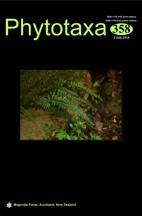Abstract
The difficulty of identifying Lauraceae species is well known. The leaf epidermis of 18 species from the Federal District, Brazil, was analyzed to test more characters as an aid to the taxonomy of this family. New anatomical characters are proposed here, such as sinus number, internal angles and number of sides of the common epidermal cells, their arrangement around the trichome base, and the shape and width of the subsidiary cells in relation to the guard cells. Epidermal characters that can aid in the identification of the studied species are: the contour of the common cells on both leaf surfaces and their anticlinal wall width, number of sides of the polygonal cells, sinus number, presence of angles greater than 180°, presence and type of indumentum, common cells with radial arrangement around the trichome base, stomatal position relative to the rest of the epidermis and width of the subsidiary cells in relation to the guard cells. Glabrous and glabrescent leaves are distinguished. Two species have unique characters: Aniba heringeri, with papillae on the abaxial surface, and Cryptocarya moschata, with peculiar horseshoe-shaped subsidiary cells. Characters of the epidermis together with the external leaf morphology are sufficient to distinguish the studied species. Additionally, we report for the first time the occurrence of Mezilaurus crassiramea and Ocotea diospyrifolia for the flora of Federal District, Brazil.

